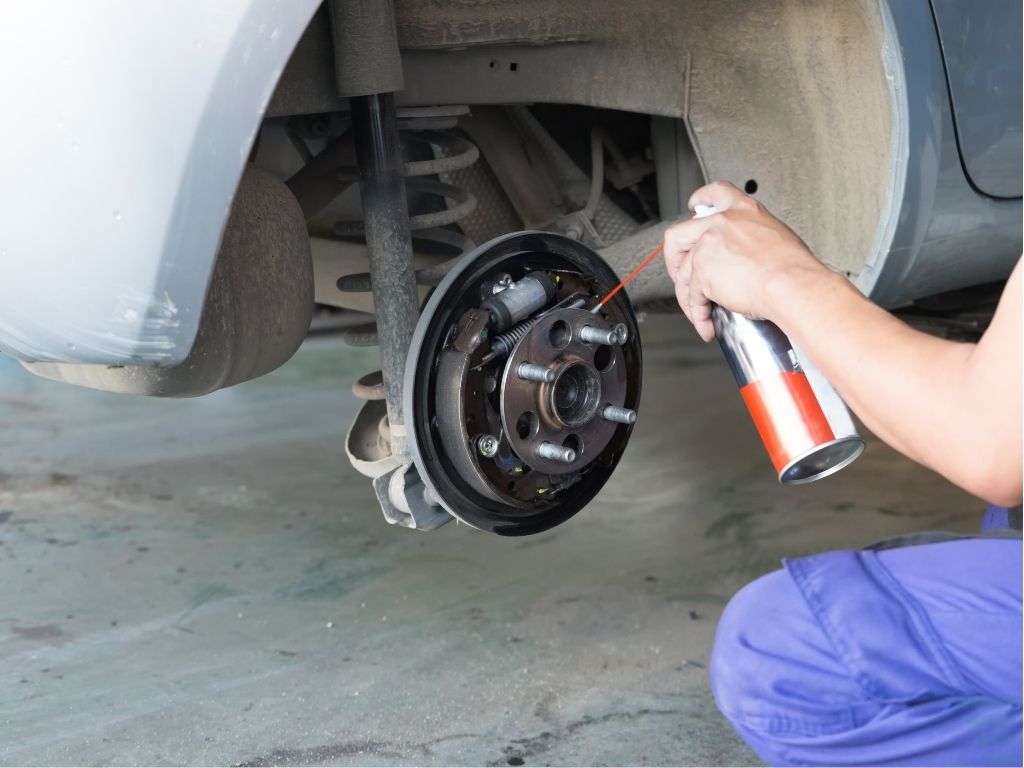How to Use Brake Cleaner For Maximum Benefits

If your vehicle’s brake pads are wearing down to the point where they are losing their effectiveness and causing annoying and inconvenient delays when going up and down the road, it may be time to find out how to use brake cleaner. So the question is how to use brake cleaner for maximum benefits?
Unlike many brake repairs to the brakes, cleaning the brakes with a spray on cleaner is extremely inexpensive and does not require much prep time or even removal of any parts. It can often be done in a matter of minutes and all the required tools and supplies can be found within any local garage or storage shed. Here’s how to use brake cleaner to improve your vehicle’s braking power:
How to Use Brake Cleaner For Maximum Benefits
Main Ingredients of Brake Cleaners
What do you need to use brake cleaners for? Like any chemical cleaner, there are several different kinds on the market, but the main ingredients are carbamide peroxide and sodium hypochlorite. Other chemicals that are commonly included are uratic, urea, carbon dioxide, and water. The correct liquid to use depends largely on the condition of your braking system, but most systems can use these two main ingredients.
Apply the Right Amount
The amount of cleaning agent you will need to properly clean your brakes will vary, depending on how worn the pads are and what kind of surface they have. If your pads are very worn, it may take only a very small amount of the cleaner to bring them back to pristine condition.
If, however, your system is made from plastic, stainless steel, or aluminum, it may need more than one coat. For these surfaces, the recommended number of applications is four to five. For metal systems with steel brakes, you should never exceed ten applications.
You do not want to use too much brake cleaner, as excess chemicals can damage the finish on your brakes. Any left-over residue should be removed immediately before driving. If left on the pads too long, the compounds can deteriorate the rubber parts around the rotors and calipers. This will cause your brakes to work harder and longer, but ultimately, could cause them to wear out prematurely.
Always Inspect the Pads
After applying the cleaning chemical, you should always inspect the pads for any degradation. If you see any discoloration, you should stop using it immediately and consult your mechanic. Discolored pad parts could mean that there is rust or metal filings inside the pads. These will eventually start looking bad and need replacement.
Using Water
Normal Pads
There are several different methods when it comes to cleaning pads, but one of the easiest is with water. Fill a container with warm water and a small amount of brake cleaning solution, such as Master Flash Pro, and place this into the device you intend to use.
Mix the solution thoroughly and then apply it to the pads one at a time.
For pads that have stainless steel linings, you should first soak these linings in the solution and allow them to become dark.
Then, rinse them off to get the shiny part of them and use this solution to clean them off.
Carbon Fiber Pads
If you have carbon fiber pads, you should first drain and wash off the stains by using a scrubber or a detergent.
Then rinse these off and put the pads back into the container you used to store them in.
Before applying the cleaner, make sure to properly insert the pads, starting from the outside of the pad and working toward the center.
You can use any direction that feels comfortable, as long as it does not create scratches on the paint.
Follow all the instructions on the container to ensure that the pads are properly cleaned and that you are left with a product that will effectively work for the pads without harming the paint.
Conclusions
Cleaning your brakes properly can reduce the risk of brake failure, but it will take time. Brake pads are made up of many tiny grooves and pits, which absorb braking energy as the wheel rotates. These grooves are very small, but they are essential for providing friction for a smooth ride. Without these small grooves and pits, the friction would not allow the brakes to effectively apply force when the driver tries to slow down a car. As the driver slows down, the pressure on the brakes is released and the pads begin to compress, taking the slack form of the metal rotors and calipers, which then squeeze the brakes for extra stopping power.
source https://automotivegearz.com/how-to-use-brake-cleaner/
Comments
Post a Comment